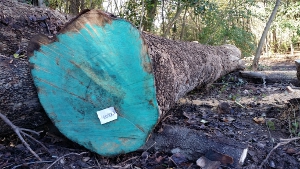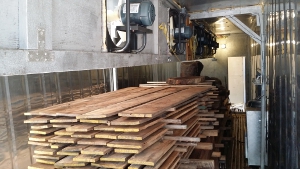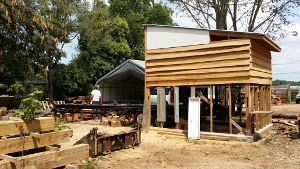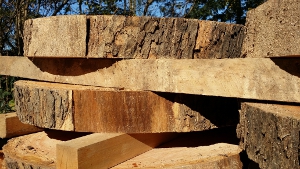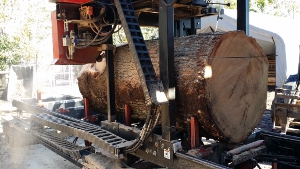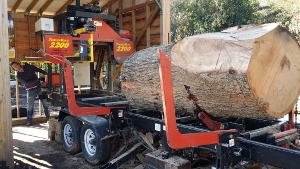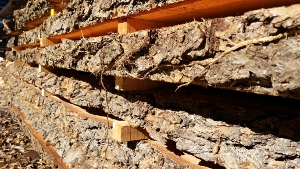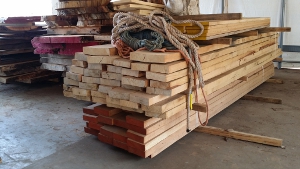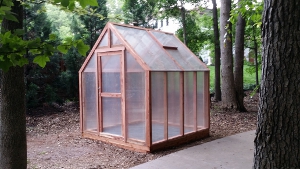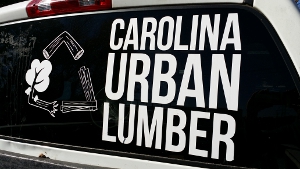The Ruiz Family's Organic Garden
 Friday, November 20, 2015 at 2:05PM
Friday, November 20, 2015 at 2:05PM 
The Ruiz family’s South Charlotte neighborhood nestles into the surrounding tree canopy like grandpa in recliner. Squirrels forage for acorns while school children hold court in quiet cul de sacs. The busy family of four had already begun taking steps toward healthy living, like buying organic produce from local farmers and joining a csa program. They had even tried a small garden and compost pile, but with limited success.
Recently they decided that it was time to step it up in the garden. With some thoughtful panning and a little help from Microfarm Organic Gardens, they’d soon be bringing in abundant harvests of organically grown heirloom varieties of family favorites like kale, chard and spinach - right from their own backyard.

Lots of trees also means lots of shade, but luckily there was a level site in the backyard - just a few skips from the kitchen sink - with the perfect combination of morning and late afternoon sunlight. Their plants would soak up plenty of direct sunlight, while getting a welcome reprieve from scorching afternoons. The Ruiz family’s cultivar wish list reads like ‘War and Peace’, so we designed a raised bed layout that offered enough area to grow a diverse selection of edibles all year long. Wildlife is abundant in the neighborhood, so the family opted for our 19” tall Kitchen Garden design, which is often high enough to keep out rabbits and pets, not to mention much easier on the back than other raised bed designs.

Their L shaped Kitchen Garden raised bed measures 4’ wide and 10’x12’, while the smaller Kitchen Garden raised bed measures 4’x6’ – plenty of room for a deep selection of off the beaten path heirloom varieties . Our Kitchen Garden raised beds are made with locally milled eastern red cedar - a combination of rough sawed 1x6 boards fastened to 4x4 posts, with 2x4 stakes placed on the inside help reinforce the design. A border of steel edging and pathways finished with small glacier pebbles eliminate muddy walks to the garden, and gives it a tidy elegance that even the neighbors can enjoy.

Naturally, a garden is only as good as its soil, so ours are filled with a premium blend of pine fines, mushroom compost, and PermaTill. This soilless blend delivers excellent drainage while allowing plant roots to quickly grow throughout the medium and absorb water and nutrients.
The right combination of macro and micro soil nutrients ensures healthy plants and strong production, and our hand mixed organic amendment blend includes blood meal, bone meal, kelp meal, green sand, rock phosphate, and dolomite limestone.
It wasn’t that their old prefabricated plastic compost bin was terrible, but now it fit in with the new garden like an Andy Warhol painting at the Biltmore Estate. Plus it was a little on the small side, and asking it to process enough compost for their new garden would be like asking a Prius to tow a backhoe over to the jobsite. With almost 100 square feet of new garden area, there’ll be plenty of room to continuously work in fresh compost, and we found a perfect nook nearby for a Microfarm single bin cedar compost station. It’s an open top design made with 1x6 red cedar boards and features a slatted front that makes it easy to turn and retrieve compost.










